Where To Spot Bison
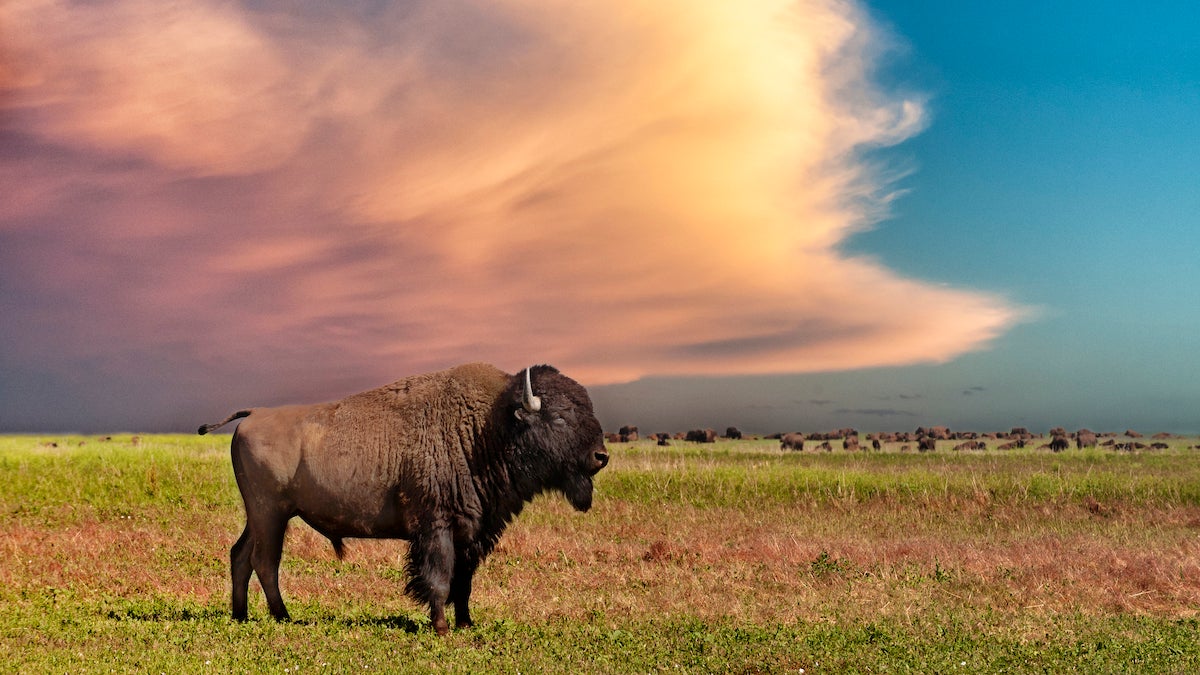
(Photo: Mike Hill via Getty Images)
An icon of prairie wilderness and a touchstone of the modern conservation movement, the American bison (or “buffalo”) is also one heck of an impressive beast to meet in the flesh. Here are the best places in the U.S. to spot these humpbacked, shaggy-headed bovids—the biggest land mammal in the Western Hemisphere—on public lands.
Yellowstone National Park

Yellowstone is sacred ground for bison: The world’s oldest national park is the only place in the country where wild plains bison have always held on. Two main herds—one on the Northern Range, one on the Yellowstone Plateau—accounting for nearly 5,000 animals migrate between summer and winter ranges. Hikers in the Lamar and Hayden valleys commonly encounter trailside buffalo bands or surly lone bulls. Photo: Ethan Schowalter-Hay
Grand Teton National Park
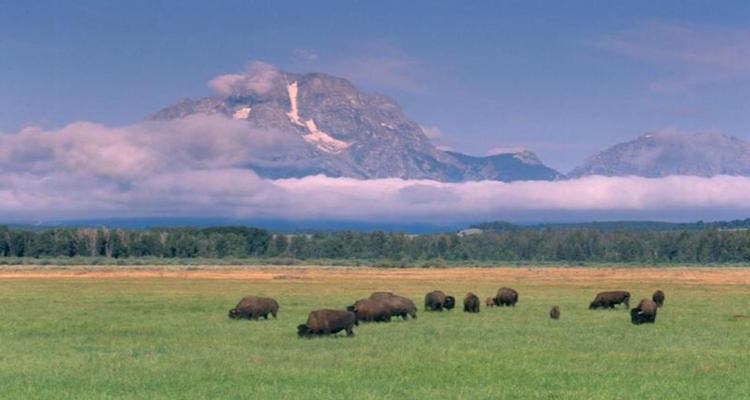
Bison aren’t quite so prominent here as in Yellowstone just north, but you can often see resident animals on the sagebrush terraces along the Snake River—with the sky-stabbing Tetons beyond. In winter, Grand Teton bison mingle with thousands of wapiti on the National Elk Refuge southeast of the park. Photo: National Park Service
Mission Mountains, Montana
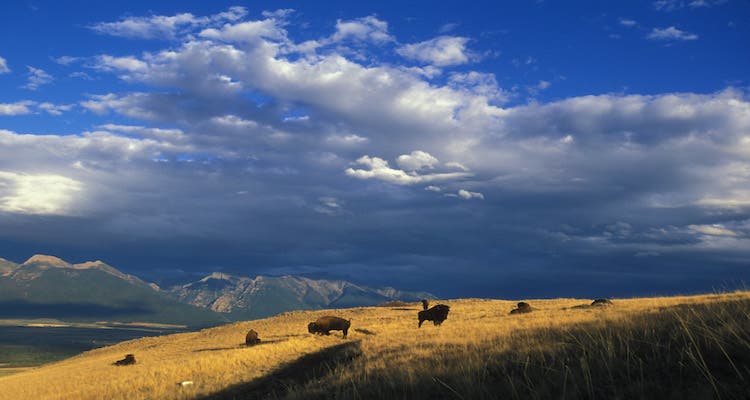
Seek out a herd of 300-odd bison on high prairies and parklands on the flanks of the Mission Mountains in northwestern Montana. The hiking’s limited to a pair of short trails, but come anyway: The blocky peaks and snowfields of the Missions make for sublimely scenic buffalo country. Photo: PD-USGov-Interior-FWS/Wikimedia
Henry Mountains, Utah
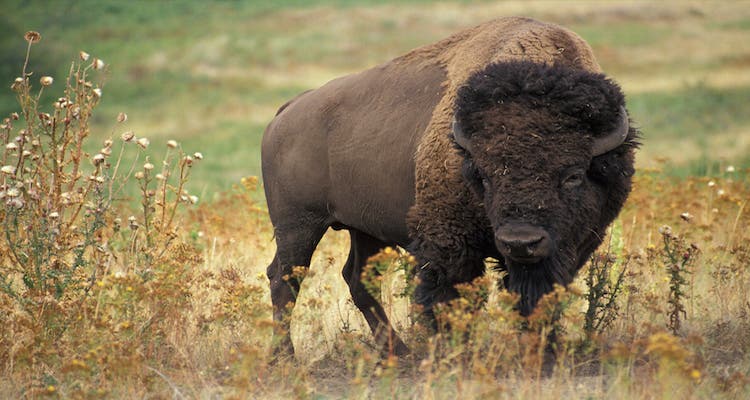
Descended from 18 Yellowstone bulls and cows released into the San Rafael Desert in 1941, the Henry Mountains herd is among the only free-roaming groups of purebred plains bison on the continent (many bison have intermixed cattle genes). More than 250 range some 300,000 acres—most of it BLM land—in the remote, gorgeous Henrys, hoofing between semi-arid benches and high-country pastures past 11,000 feet. Photo: Utah Division of Wildlife Resources
Wind Cave National Park, South Dakota
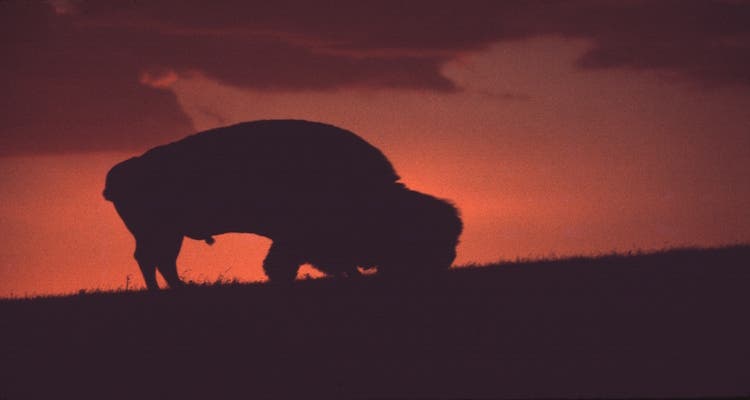
Not all of Wind Cave’s marvels are subterranean: The park’s mixed-grass prairie supports another of the precious purebred plains-bison herds in North America, derived from 14 animals transplanted from the New York City Zoo in 1914 and supplemented a few years later with six Yellowstone buffalo. Photo: National Park Service
Badlands National Park, South Dakota
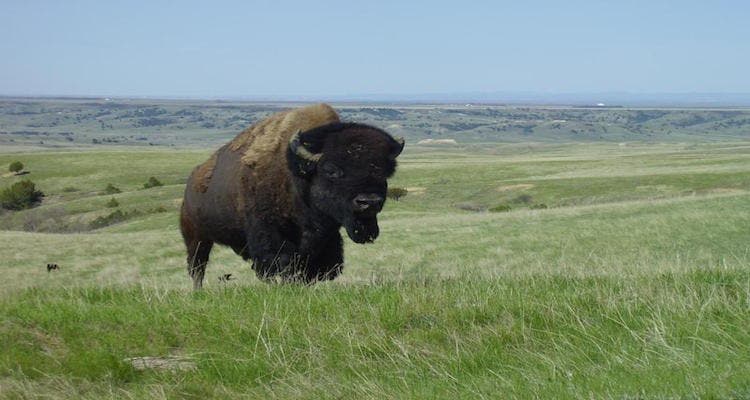
The tawny pinnacles of the White River Badlands serve as an otherworldly backdrop for bison-watching. Backpacking into the Badlands Wilderness of the park’s North Unit gives you the heady thrill of encountering on foot (at a safe distance, mind you) backcountry bison in their stronghold. Photo: National Park Service
Theodore Roosevelt National Park, North Dakota
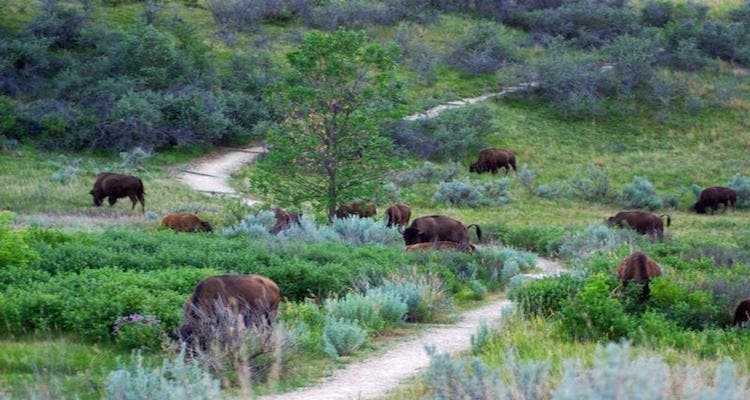
The North and South units of this quiet, oft-neglected park harbor several hundred bison each. Watching them amid the rough, timbered coulees and castellated prairie hills of the Little Missouri Badlands calls to mind visions of old T.R.’s frontier adventuring. Photo: National Park Service
Antelope Island, Utah
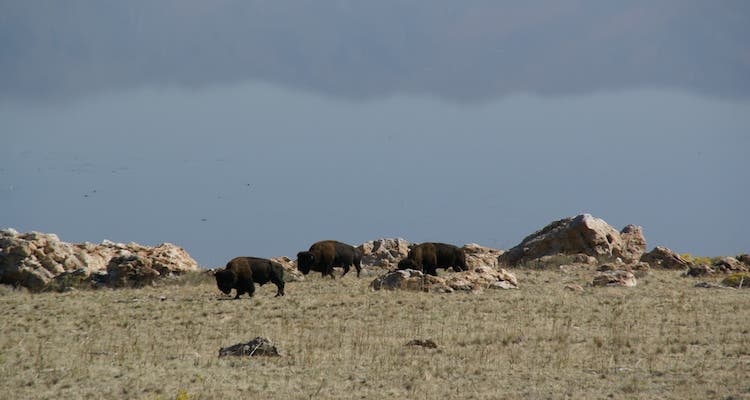
Some 600 to 700 bison graze the bunchgrass steppe of rugged Antelope Island, rather surreally looming in the southeastern corner of the Great Salt Lake. Finding the behemoths in the island’s state parklands isn’t usually hard; you might also glimpse bighorns and pronghorn. Photo: Hermann Luyken/wikimedia
Wichita Mountains, Oklahoma
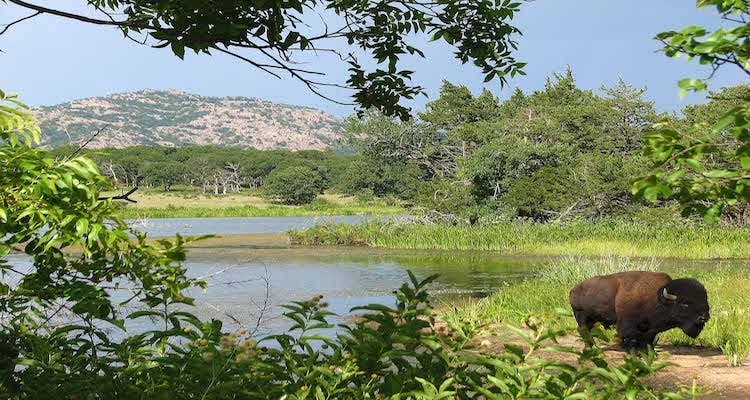
Bison are only the mightiest of the diverse ungulates pasturing in the virgin mixed-grass prairie of the roughhewn Wichita Mountains. Seek out a radically different-looking bovid in the form of feral Texas longhorn cattle, which share the bison’s stony range here. Photo: Jonathan C. Wheeler/wikimedia
Other good destinations for viewing free-range bison on public lands include the Tallgrass National Prairie Preserve in east-central Kansas, the American Prairie Reserve in north-central Montana, For Niobrara National Wildlife Refuge in far northern Nebraska, and Custer State Park in southwestern South Dakota. Wood bison—the boreal subspecies of American bison that outweighs its plains brethren—were successfully reintroduced from Canadian stock into former range in Alaska in 2015; look for the herd in the vicinity of Shageluk along the Yukon and Innoko rivers.